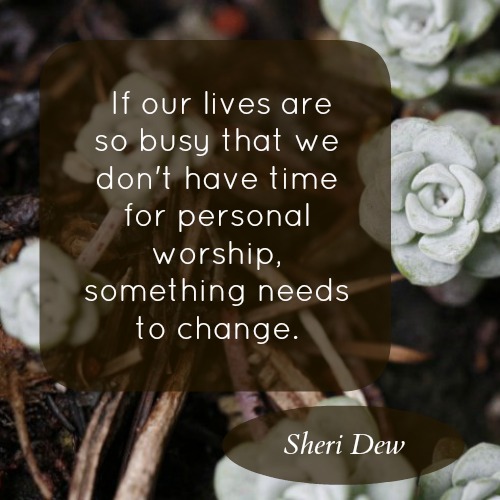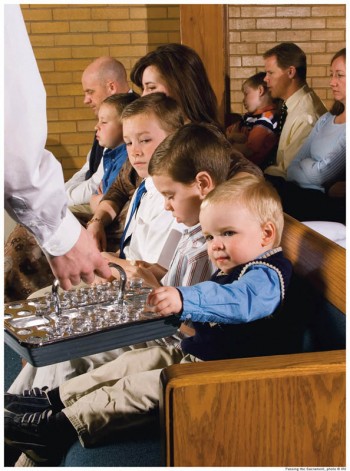Michael Otterson, head of public affairs for The Church of Jesus Christ of Latter-day Saints, says that if you want to understand what makes members of his church tick, you have to go to church with them. Often called Mormons, members of his church are assigned to congregations known as wards. Assignment is based on a member’s home address.
Otterson says that journalists want to call and ask questions, but they really need to leave their desk and go to church on Sunday. They won’t be asked for money and won’t need to kneel or do anything at all but watch, really. (They might need to pass the sacrament (communion) trays to the person next to them, but that’s all.)
 For Mormons, the ward is an important part of their church membership. Although Mormonism is a 24/7 religion and members pray, study, and keep the commandments at home and in their daily lives, there is something special in their connection to their ward, which becomes a second family. No matter where they move to or travel to, they can be certain of a warm welcome on Sunday morning in a church building. The same is true of people who are not Mormon.
For Mormons, the ward is an important part of their church membership. Although Mormonism is a 24/7 religion and members pray, study, and keep the commandments at home and in their daily lives, there is something special in their connection to their ward, which becomes a second family. No matter where they move to or travel to, they can be certain of a warm welcome on Sunday morning in a church building. The same is true of people who are not Mormon.
Visitors are always welcome at Mormon meetinghouses, which differ from the temples. Temples are closed on Sundays and worship services are not held in them. The meetinghouses, however, have services each Sunday. There is a regular worship service called Sacrament Meeting, followed by classes for everyone from ages eighteen months on. The entire block of meetings lasts three hours and nearly everyone stays the entire time.
A journalist visiting might first notice that the Sacrament Meeting is filled with children as well as adults. Mormons believe even the smallest child should join his parents in worshipping God. They enjoy the time with their families and also learn from the examples of others. Children tend to play quietly during the service until they are old enough to sit and listen. On occasion, a toddler will escape, but someone always catches him and it doesn’t stop the meeting.
 The next thing the journalist might notice is that there are many people involved in making the meeting work. A door greeter—often a new church member—welcomes people into the chapel in many congregations. The bishop, similar to a pastor, is not an employee—no one is getting paid—and has a regular outside job and a family. This means he can only devote twenty or thirty hours to the position and so Mormons all pitch in to get the work done. This gives them a sense of ownership, a confidence-building knowledge that when a ward runs well, it is partly because they have done their part. For this reason, the bishop or one of his two counselors will conduct the meeting, but the sermons, called talks, are given by ordinary members who are assigned topics in advance. There are usually two to four talks given by members ages twelve and older. Yes, teens are considered knowledgeable enough to give a brief sermon. Teens speak for five minutes and adults for ten to twenty minutes, depending on how many speakers there are. Both men and women may give the sermons and most members speak about once a year.
The next thing the journalist might notice is that there are many people involved in making the meeting work. A door greeter—often a new church member—welcomes people into the chapel in many congregations. The bishop, similar to a pastor, is not an employee—no one is getting paid—and has a regular outside job and a family. This means he can only devote twenty or thirty hours to the position and so Mormons all pitch in to get the work done. This gives them a sense of ownership, a confidence-building knowledge that when a ward runs well, it is partly because they have done their part. For this reason, the bishop or one of his two counselors will conduct the meeting, but the sermons, called talks, are given by ordinary members who are assigned topics in advance. There are usually two to four talks given by members ages twelve and older. Yes, teens are considered knowledgeable enough to give a brief sermon. Teens speak for five minutes and adults for ten to twenty minutes, depending on how many speakers there are. Both men and women may give the sermons and most members speak about once a year.
The opening and closing prayers are also given by both men and women. They are usually invited to pray shortly before the meeting begins. The sacrament, called by many churches communion, is prepared, blessed, and passed by teenage boys in most cases, although adult men fill in as needed. The chorister and pianist are both volunteers.
After the meeting, the journalist would want to stay for meetings, but might want to wander from room to room. The toddlers are playing and having a snack, but they also have real lessons and music time geared to their age group, so they are learning the basics of their faith. Other children are in a program just for them.
Teens have their own classes, but they also have weekday activities. They run and lead their own activities under the shadow leadership of mentoring adults. Their classes are taught by adults, although they sometimes take a turn at it.
Adults attend Sunday School, and, like everyone eight and older, study the scriptures on a four year rotation. Two years are devoted to the Bible, one to the Book of Mormon, and one to the Doctrine and Covenants. Visitors and new members spend one year in a class covering introductory doctrine. Following Sunday School, the men and women divide into their own meetings.
Nearly everyone has a calling—a volunteer position. The positions are rotated often, giving everyone a more thorough understanding of how the church really operates and allowing them to develop a wide range of skills. No one is promoted, so the president of an organization might be the assistant toddler nursery leader next time and not feel demoted. It’s just another assignment and leaders and assistants are equally necessary in God’s kingdom.
Otterson wrote:
“Along with families, wards are the hub of Mormons’ religious life, the place where most of the action happens. … Its collection of families and individuals of every type and shade is at the heart of the faith, and their collective commitment to each other is a direct consequence of their commitment to be followers of Jesus Christ.”
If you really want to understand Mormons, visit them at church. When you watch the way everyone works together to keep a complex congregation running, and the ways they take care of each other, you’ll see them in an entirely new way.
Read Michael Otterson’s article:
About Terrie Lynn Bittner
The late Terrie Lynn Bittner—beloved wife, mother, grandmother, and friend—was the author of two homeschooling books and numerous articles, including several that appeared in Latter-day Saint magazines. She became a member of the Church at the age of 17 and began sharing her faith online in 1992.



